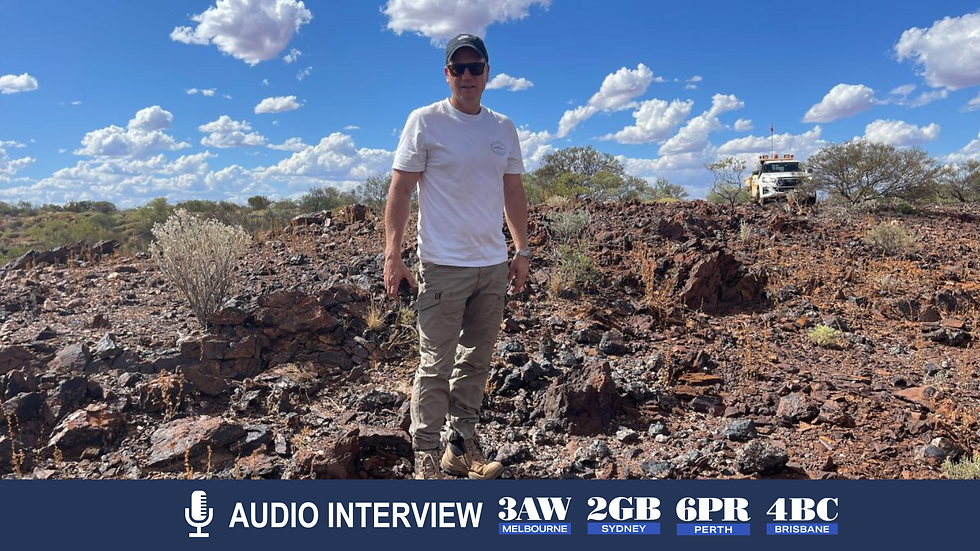Aruma takes deep dive into multi-commodity Saltwater play
- Helen Barling

- Oct 18, 2023
- 2 min read

Aruma Resources’ deep dive into its Saltwater project in Western Australia’s Pilbara region is tossing up a myriad of intriguing high-grade polymetallic targets from first-pass rock-chip sampling.
The company’s latest results have returned high-grade manganese peaking at 40 per cent and cobalt up to 0.36 per cent, in addition to anomalous vanadium, uranium, iron, lead and zinc tipping into the melting pot of previously-reported anomalous copper and rare earths.
The manganese-cobalt anomaly at Saltwater Creek has been mapped out in a 2km strike, with the chemistry suggesting a sea-floor polymetallic manganese nodule system with cobalt, copper and zinc. The company believes its underexplored Saltwater project has the potential to host multiple mineralised systems laden with critical metals … and for good reason.
Aruma’s project shares a fence with Dreadnought Resources’ Bresnahan project in an emerging rare earths province where the latter has uncovered a plethora of high-grade rock samples tipping the scales at 1.33 per cent total rare earth oxides (TREO).
Dreadnought picked up its Bresnahan project at the end of last year to test a conceptual unconformity heavy rare earths geological model typified by deposits in Canada’s world-class Athabasca Basin and Northern Minerals’ Browns Range project in northern Australia. The model pinned the unconformable contact between the Bresnahan Basin and sediments of the underlying Wyloo group as a potential host for rare earths.
The results generated to date from our ongoing sampling program at Saltwater are highly encouraging and validate our technical team’s ability to consistently extract materially positive results from our initial, targeted fieldwork. Based on results to date, we are confident in our view that we have identified a high-value target for battery-grade manganese-cobalt, multiple VMS targets, as well as promising uranium prospects. Aruma Resources managing director Glenn Grayson
Interestingly, Aruma’s 450 square-kilometre Saltwater project takes in about 80km strike of the prospective contact. The company has now covered some 30 per cent of its tenure in its first-pass reconnaissance program and rock-chip samples have been strategically collected from priority targets identified through radiometric, geophysical and structural data.
Management says results to date have verified the existence of large-scale volcanogenic massive sulphide (VMS) systems with elements such as iron, barium, copper, lead, zinc and arsenic. Rock-chip samples have returned up to 57 per cent iron, 0.27 per cent zinc and 0.4 per cent lead.
The results also include a series of sandstone-hosted uranium and vanadium anomalies kicking up 0.16 per cent vanadium and 39 parts per million uranium.
The company now plans to delve deeper into the Saltwater rocks this month with its next phase of exploration, which will include systematic gridding over priority anomalies, in conjunction with field mapping and rock-chip sampling of additional geophysical and structural targets.
Time will tell what treasures are hidden on the ancient sea floor.
Is your ASX-listed company doing something interesting? Contact: office@bullsnbears.com.au


